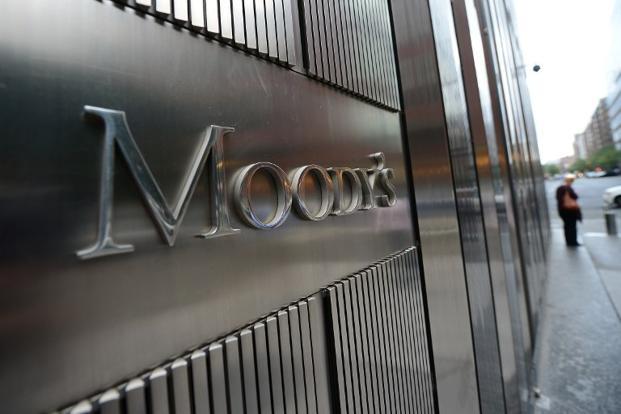Why I Bought Moody’s

On Monday, I initiated a small position in Moody’s (MCO) common stock. I thought it would be worthwhile to put together a short article outlining my thoughts on the investment opportunity.
Business
Moody’s is primarily an issuer of credit ratings (70% of the company’s sales and 85% of operating income). In the early and mid-2000s, Moody’s growth was fueled by rating Structured Finance products like mortgage-backed securities; at its peak, this business accounted for the majority of the company’s ratings revenue. Following the financial crisis of 2008-2009, Structured Finance fell off a cliff. In 2015, this business generated $ 449 million in revenues – still 50% below the peak (2006). Structured Finance has declined from the majority of the ratings business at Moody’s in 2005 and 2006 to less than 20% in 2015. The remainder of the rating business is more “vanilla” in nature (investment grade and high yield corporate bonds, infrastructure bonds, etc.).
The ratings business is effectively a duopoly, dominated by Moody’s and S&P Global (SPGI). In the back half of the 20th century, government regulations increasingly required investors in industries like banking and insurance to refer to credit ratings when selecting investments. Positive marks from a Nationally Recognized Statistical Rating Organization (NRSRO), a designation created by the Securities & Exchange Commission in the 1970s, became a must-have seal of approval for bond issuers.
Following the financial crisis of 2008-2009, politicians in both the U.S. and Europe took steps to reduce regulatory reliance on credit ratings, as well as to weaken the stranglehold of Moody’s and Standard & Poor’s in particular. An SEC report from year-end 2014 sheds some light on the efficacy of these efforts over five-plus years: in 2014, the “Big Three” rating agencies (includes Fitch) accounted for 96% of all outstanding ratings. This is marginally lower than the number of outstanding credits rated by the “Big Three” rating agencies in 2007 (~99%).
The experience in Europe has been similar. As an example, regulators enacted rules that pushed for companies to consider smaller CRAs (credit rating agencies): CRA Regulation states that where issuers intend to use two or more rating agencies, they should consider appointing a CRA with less than 10% market share; if they choose to do otherwise, they must document the rationale for their decision. Simply put, this has changed very little: the “Big Three” rating agencies account for more than 90% of the market. None of the other CRAs has more than 2% market share.
In both cases, market participants appear content with the current structure. They selected the winners long ago, creating nearly insurmountable barriers to entry for competing CRAs.
The value of ratings
One of the key questions I had about Moody’s during my research was on pricing power. In my work, I found some encouraging information. The first point is on costs: based on my research, the fee on a corporate bond rating is roughly five to six basis points. The second component in the equation is the value to the issuer: management has publicly stated that the spread on an unrated bond is often 25 to 50 basis points above a rated bond. These figures are comparable to estimates from other sources, like The Economist (“The return in lower borrowing costs can be up to 10x the fees paid for the rating”). Clearly the math is quite compelling for issuers. Even as Moody’s continues to push real pricing gains, the numbers suggest plenty of room remains.
As Mark Massey of AltaRock noted in a 2014 interview with The Manual of Ideas (here), there are other “costs” for companies to consider as well:
“Senior financial executives that desire access to debt capital markets for their companies need to maintain a fairly close relationship with ratings agencies. They need to keep them abreast of any actions that their companies have taken or might take that could impact their credit profile. These executives do not want to spend their entire lives meeting with lots of different ratings agencies so it is in their interests for there to be just a couple, well-established, ubiquitous firms.”
Uses of cash
Beyond investing in rating agencies in emerging markets (like China and India), Moody’s has historically had limited need for the piles of cash generated by its ratings business. More than 100% of the free cash flow can be used for M&A or capital returns to shareholders.
Since 2008, the company has invested heavily in the Moody’s Analytics segment. The primary activity of Moody’s Analytics is selling the research generated in the ratings business. In recent years, this business has consistently reported ~95% customer retention with ~5% annual price bumps (this business line has reported a trailing five-year revenue CAGR of 8%). In addition to selling research, Moody’s Analytics also sells risk management and regulatory compliance software to financial institutions. As the company continues to grow in this business (trailing five-year revenue CAGR of 17%), they’re likely to report significant operating leverage. Across the Analytics business, Moody’s has made a number of acquisitions in the past eight years; that’s likely to continue.
After years of subdued activity during and after the financial crisis, Moody’s has spent $ 3.2 billion on share repurchases over the past three years. Over this period, the number of diluted shares outstanding has declined by 12% (through the first quarter of fiscal 2016). In addition to share buybacks, the company pays a healthy dividend (~30% payout ratio). The dividend has tripled over the past five years to $ 1.36 per share; as of Monday’s close, the dividend yield was 1.7%.
Conclusion
Moody’s future growth is likely to come from a number of avenues: global GDP growth; the growing share of capital markets lending versus banks (particularly in Europe); growth in the Moody’s Analytics business; and pricing gains in both operating segments. All-in, management has guided to long-term revenue growth of roughly 10% per annum. This sounds like a reasonable long-term revenue growth target that meshes with historic results.
The company does not need to retain free cash to support future growth of the ratings business, which means sizable repurchases and M&A. On average, I expect these activities to add at least a few hundred basis points of additional growth to the bottom line (earnings per share). All-in, Moody’s can grow EPS in excess of 10% per annum for a long time. Inclusive of the dividend, annualized equity returns are likely to be in the low double digits over the next five to 10 years.
At $ 87 per share, Moody’s trades for less than 19x trailing earnings. With a long-term perspective, a business like Moody’s is worth substantially more than 19x earnings (I will write an article that covers this topic in more detail in the near future). As always, I hope the stock moves lower in the coming months so I can buy additional shares with higher expected rates of return.








